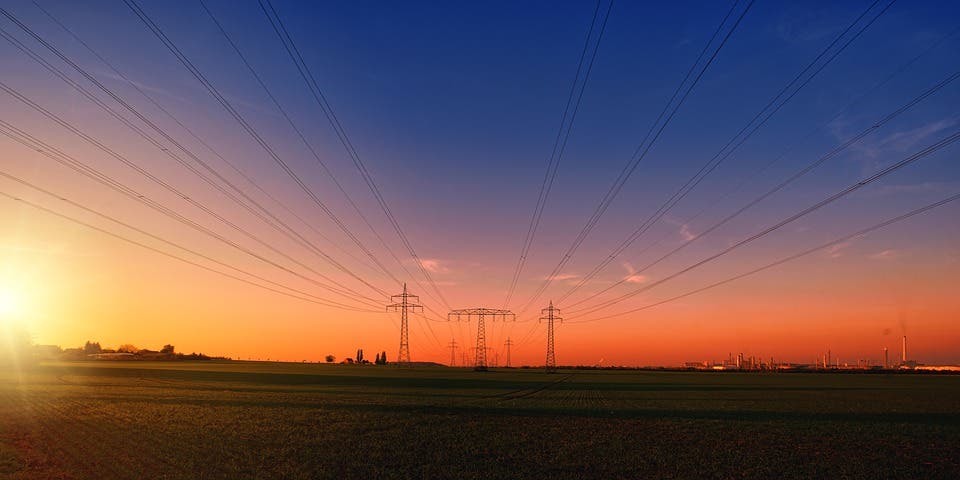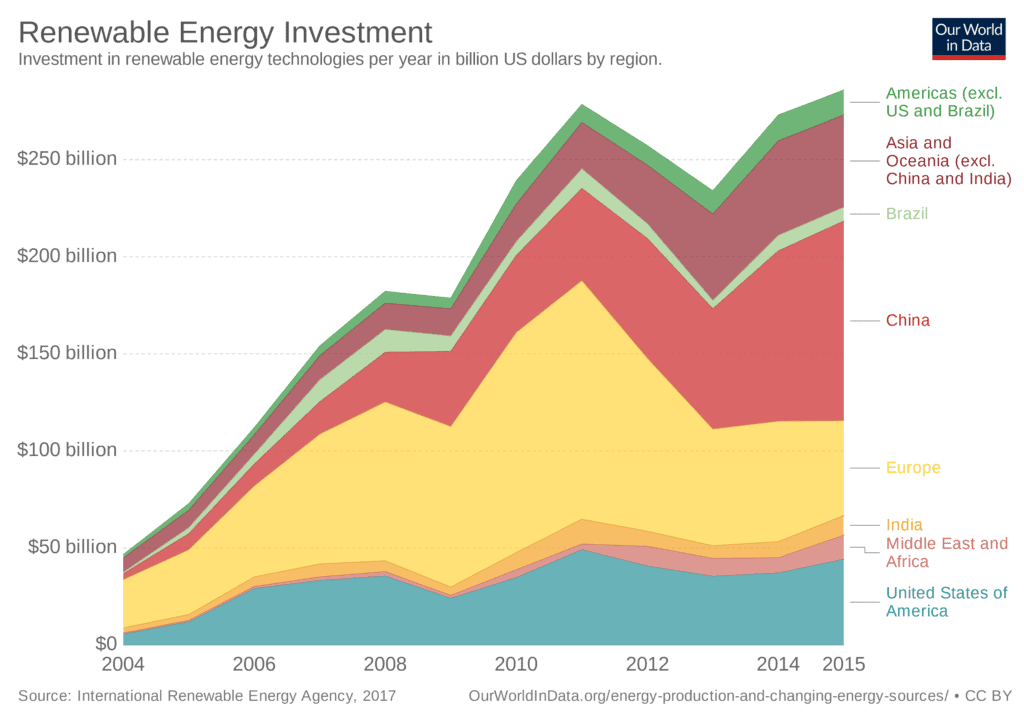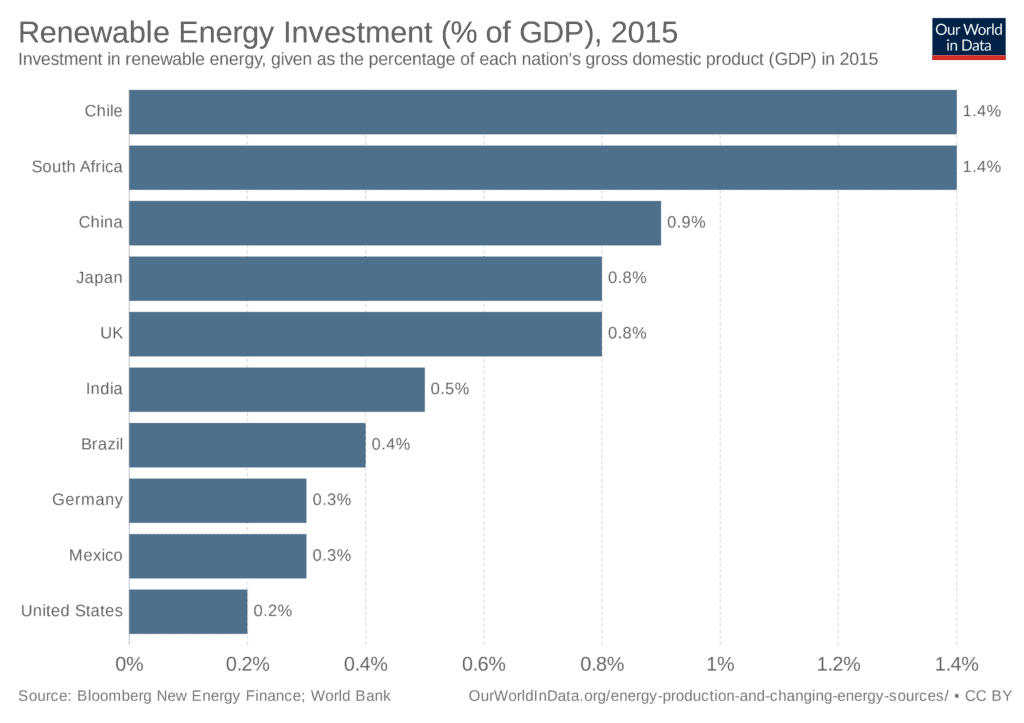Decoupling our economies from fossil fuels hinges on one key component: investment. So, for today, I’d thought it would be interesting to see where the money is going in the energy sector, and what story those dollars are telling.

There are two ways to look at renewable energy investments: in absolute figures (i.e. how much each country is investing) and relative terms (i.e. how much of what they’re making, called GDP, they are investing). Let’s start with:
The absolute figures
Member states of the International Energy Agency (IEA) spent a total of $7,757 million on renewable (nuclear and hydrogen fuel included) research, development, and demonstration — or RD&D — in 2018. While that is a slight uptick from the previous year, it does come after a period of reduction in investments that lasted from 2011 ($10,548 million) to 2017 ($7,325 million). If we take nuclear and hydrogen out of the mix, investment in renewable energy in 2018 in IEA countries reached $2,972 million. Wind and solar energy are seeing the lion’s share of those investments.
Ourworldindata reports that global investments in renewable technologies increased from $47 billion in 2004 to $286 billion in 2015 (which is just over a 6-fold increase).
If you consider yourself a fan of clean energy — I personally am — then you’ll be delighted to hear that investment in renewable RD&D has outstripped investment in fossil fuels ever since 2010. We’re keeping nuclear and hydrogen out of this comparison. Nuclear energy tends to be quite expensive; investments here consistently dwarf those in both renewables and fossil fuels combined, and hydrogen is still a burgeoning field.
Adjusted for purchasing power parity (PPP) the US, Japan, and the EU spend the most on renewable RD&D among IEA countries. France, Germany, the UK, Canada, Korea, and Mexico come after them. Most of these countries increased their investments into renewables in 2018. Note that under the IEA’s report, investments from the EU budget and from individual EU member states are handled separately. China is the largest single spender in renewable technologies, investing approximately the same amount as the United States, Europe, and India combined, according to Ourworldindata. They report that the country has also seen the greatest increase in investment, from $3 billion in 2004 to $103 billion in 2015 (a roughly 34-fold increase).

All in all, I’d say things are looking pretty good so far. More investment means more clean energy, and it also helps bring the cost of subsequent installations down — which means more (and more affordable) clean energy. This dynamic could help bring clean, renewable energy to the forefront of our grids by 2030 as ZME Science reported here. The shift is also encouraging news for those concerned about the environment.
“There are reasons to be optimistic, and reasons to be pessimistic,” Andrei wrote. “[W]e might be heading towards a future where renewables rule the market – and that future may be led by China. But even if this happens, we’re still off track for meeting the 2 degree goal: the plan of keeping global temperatures less than 2 degrees higher than before the industrial revolution.”
Andrei further explained that the IEA does have a plan on-track to keep global warming under check, and it involves five steps:
1. Increasing energy efficiency
2. Reduce coal and ban new coal plants
3. Ratchet up investment in renewables from $270 billion to $400 billion by 2030
4. Phase out fossil fuel subsidies
5. Reducing methane emissions in oil and gas production
The relative figures
While it’s definitely interesting to see who’s making it rain in the field of renewable energy, that’s only part of the story. It is much easier for a large, developed country to make investments. The absolute figures don’t give us a good indication of how much of a country’s total income is being spent on renewables — but investments relative to GDP (gross domestic product) do.

Keep in mind that this data was recorded in 2015. Most countries invest around or below 1% of their GDP in renewable technologies, with Chile and South Africa being the two applaudable exceptions at 1.4% . China makes the top of the list here, too, as it did for absolute investments, with 0.9% of its GDP going into renewable RD&D. The US, despite being one of the largest absolute contributors is one of the runts of the litter here, with investments only consisting of 0.2% of its GDP.
One interesting point that arises from this dataset is that developing countries tend to invest more heavily (as a percentage of their total economy) into renewables than high-income countries. They’re also installing more of them, at almost double the rate of developed countries. Part of this can be due to the fact that developing countries need to develop or expand their energy production and delivery systems, whereas developed countries already have robust grids.
However, this might be good news for developing countries. A new study, co-authored by scientists from the Sustainability Research Institute at the University of Leeds, reports that the energy return on investment (EROI) for fossil fuels is lower than that of renewables. The EROI coefficient basically shows how much energy a source (such as coal or oil for example) produces compared to how much energy it takes to extract. It shows us how much we ‘get’ from a source compared to what we put in. The study was the longest of its kind, analyzing different sources of energy over a 16 year period, and found that at the finished fuel stage, fossil fuels range between 6:1 to 3:1 EROI. Renewable energy, on average, hovered around 10:1.
In other words, developing countries who are basing more of their national grids on renewable sources stand to benefit in the long run, as they can produce more energy for less effort. At the same time, the study’s authors warn that increasing energy costs of extracting fossil fuels will keep slashing away at their EROI coefficient, pushing this type of resource towards a “net energy cliff” — a point at which society starts running out of power because it takes too much energy to produce its energy.
“The ratios will only continue to decline because we are swiftly reaching the point where all the easily-accessible fossil fuel sources are becoming exhausted,” said co-author Dr Paul Brockway, an expert in energy-economy modelling at the School of Earth and Environment at Leeds.
“By stepping up investment in renewable energy sources we can help ensure that we don’t tip over the edge.”
That and ensure we don’t tip our planet over the edge, either. A win-win in my book.


